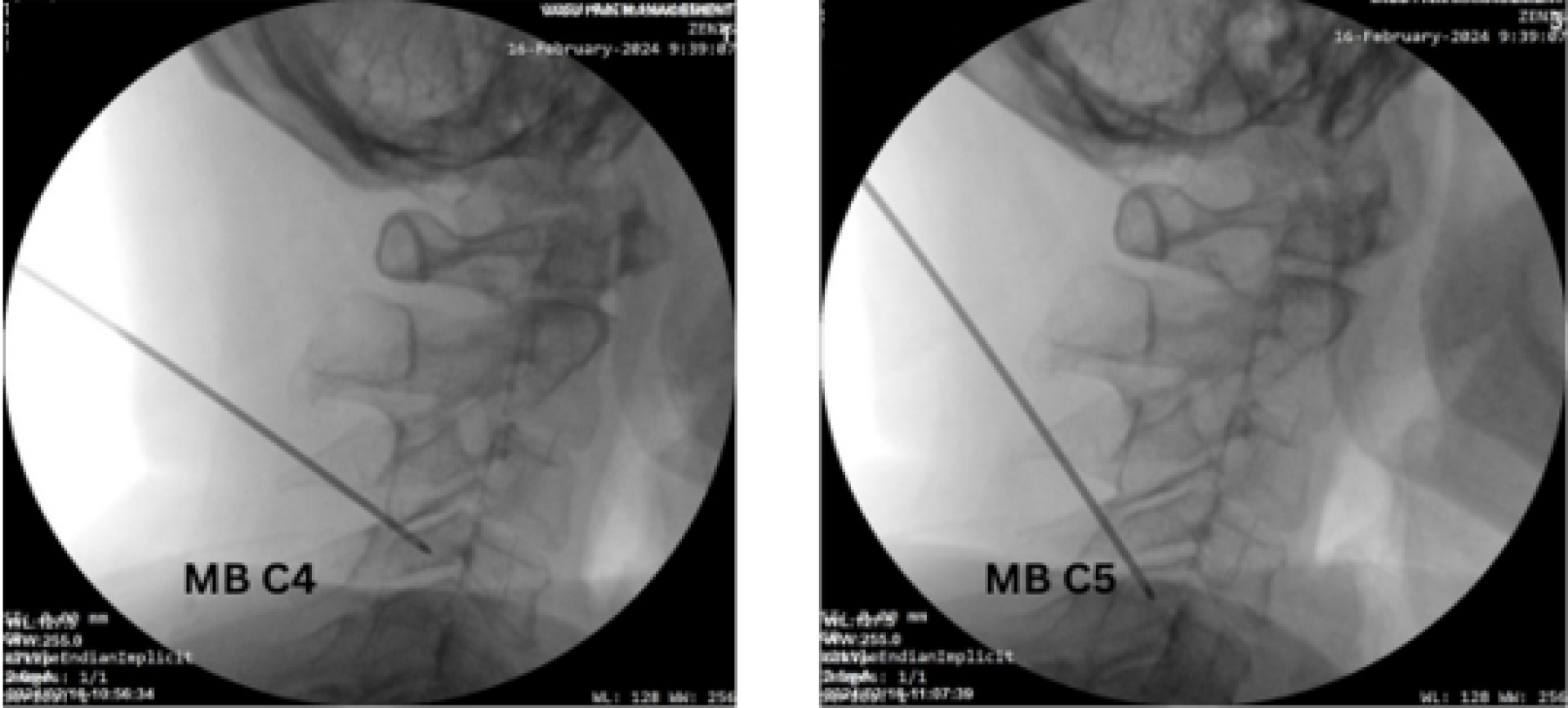Cryoneurolysis for Cervical Facet Joint Pain
Last updated: 1 Aug 2025
479 Views

Cryoneurolysis for Cervical Facet Joint Pain
Cervical facet joint syndrome is a common cause of chronic neck pain, often resulting from degenerative changes, whiplash injuries, or postural strain. Patients typically present with deep, aching neck pain that may radiate to the shoulders or upper back. Pain often worsens with head movements, prolonged sitting, or poor posture.
The pain is mediated by small sensory nerves called medial branches that innervate the facet joints. When conservative treatments like physical therapy or medications are insufficient, cryoneurolysis offers a minimally invasive alternative to disrupt these pain signals.
How Cryoneurolysis Works
Cryoneurolysis involves applying extremely cold temperatures to the targeted medial branch nerves. The cold creates a temporary interruption in nerve conduction, effectively "stunning" the nerve without permanently damaging surrounding tissues. This process reduces pain while preserving nerve structure, allowing natural regeneration over time.
Procedure Overview
Cryoneurolysis is performed under ultrasound and fluoroscopic guidance to ensure accuracy and safety:
The entire procedure is outpatient-based, often completed within 60-90 minutes.
Duration of Relief
Pain relief typically begins within a few days and can last 6 to 12 months, depending on individual nerve regeneration rates. Repeat procedures may be considered if symptoms return.
Benefits and Considerations
Pros:
Cons:
Cryoneurolysis of the cervical medial branch is an effective, well-tolerated option for patients suffering from facet joint-related neck pain. Speak with our specialists to see if this treatment is right for you.
Cervical facet joint syndrome is a common cause of chronic neck pain, often resulting from degenerative changes, whiplash injuries, or postural strain. Patients typically present with deep, aching neck pain that may radiate to the shoulders or upper back. Pain often worsens with head movements, prolonged sitting, or poor posture.
The pain is mediated by small sensory nerves called medial branches that innervate the facet joints. When conservative treatments like physical therapy or medications are insufficient, cryoneurolysis offers a minimally invasive alternative to disrupt these pain signals.
How Cryoneurolysis Works
Cryoneurolysis involves applying extremely cold temperatures to the targeted medial branch nerves. The cold creates a temporary interruption in nerve conduction, effectively "stunning" the nerve without permanently damaging surrounding tissues. This process reduces pain while preserving nerve structure, allowing natural regeneration over time.
Procedure Overview
Cryoneurolysis is performed under ultrasound and fluoroscopic guidance to ensure accuracy and safety:
- Patient Positioning: The patient lies on the lateral side.
- Localization: The cervical medial branches are first identified using ultrasound for real-time visualization of soft tissues. Fluoroscopy is used concurrently to confirm vertebral level and needle placement.
- Anesthesia: Local anesthetic is administered to the skin and subcutaneous tissue.
- Probe Placement: A specialized cryoprobe is advanced to the target medial branch.
- Cryoneurolysis: The probe delivers cycles of freezing (-60 to -80°C), typically lasting 23 minutes per site.
- Confirmation and Completion: Final imaging confirms treatment area before probe removal.
The entire procedure is outpatient-based, often completed within 60-90 minutes.
Duration of Relief
Pain relief typically begins within a few days and can last 6 to 12 months, depending on individual nerve regeneration rates. Repeat procedures may be considered if symptoms return.
Benefits and Considerations
Pros:
- Minimally invasive with no incisions
- Can delay or avoid the need for surgery
- Lower risk of neuroma formation compared to other ablation techniques
- Preserves nerve structure for future regenerative options
Cons:
- Temporary effect; repeat treatment may be necessary
- Mild soreness or bruising at insertion site
- Rare risk of nerve irritation or transient numbness
Cryoneurolysis of the cervical medial branch is an effective, well-tolerated option for patients suffering from facet joint-related neck pain. Speak with our specialists to see if this treatment is right for you.